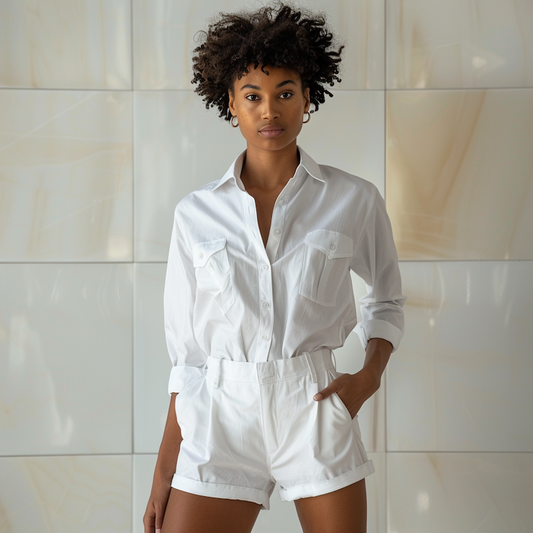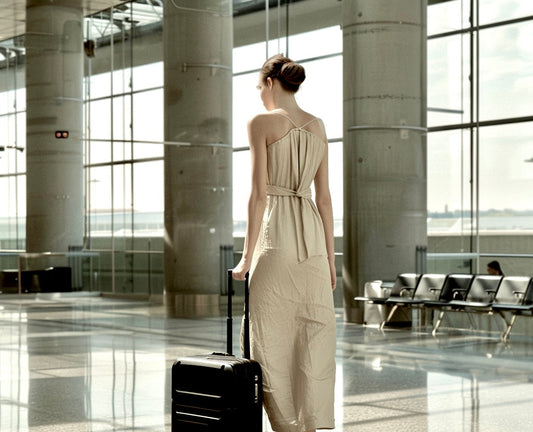Over the years, women's fashion has undergone a fascinating evolution, constantly redefining trends and reflecting societal changes. From the iconic flapper dresses of the Roaring Twenties to the power suits of the 1980s and the body-positive movement of today, the evolution of women's fashion is a reflection of women's growing empowerment and changing roles in society.
Decoding Women's Fashion Evolution
Let's rewind to the start and delve into the evolution of women's fashion for a deeper understanding of its transformation.
Introduction
In the early 1900s, women's fashion was defined by corsets, full skirts, and modesty. However, with the rise of the feminist movement, fashion adapted to match changing social norms. The 1920s saw the emergence of the iconic flapper dress, symbolizing the newfound freedom and liberation of women. The 1950s brought feminine silhouettes and the hourglass figure, while the 1970s showcased the bohemian style with maxi dresses and flared pants.
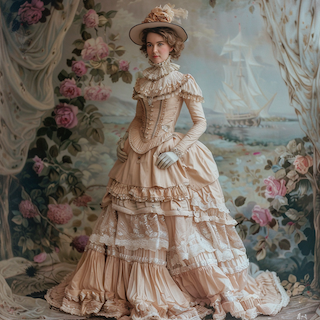
Fast forward to the present day, and women's fashion has become an embodiment of self-expression and individuality. From bold prints and vibrant colors to gender-neutral styles, fashion is no longer limited by societal expectations. Women now have the freedom to dress for themselves and embrace their unique sense of style.
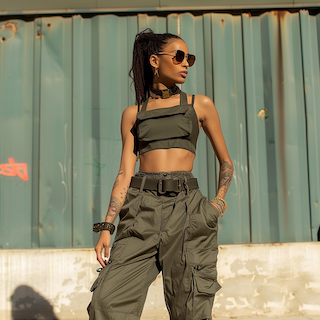
The evolution of women's fashion speaks volumes about the progress made by women in society. It has become a powerful tool for self-expression and a celebration of diverse identities. As we continue to move forward, one thing is certain: women's fashion will always adapt and change with the times, reflecting the ever-evolving spirit of women around the world.
Historical Overview of Women's Fashion
Women's fashion has a rich and diverse history that dates back centuries. In ancient civilizations, such as Egypt and Greece, women's clothing was often draped and flowing, reflecting the cultural norms of the time. However, as societies evolved, so did fashion.
During the Renaissance period, women's fashion became more structured and elaborate. Corsets were introduced to shape the waist, and voluminous skirts were adorned with intricate embroidery and lace. This emphasis on the female form continued into the Victorian era, where elaborate gowns and bustles were the height of fashion.
The early 20th century brought significant changes in women's fashion. With the rise of the suffragette movement and the fight for women's rights, fashion became a symbol of rebellion and empowerment. The iconic flapper dress of the 1920s, with its dropped waistline and shorter hemline, challenged traditional notions of femininity and reflected the changing social landscape.
Fashion Icons Throughout History
Throughout history, there have been influential women who have left their mark on the world of fashion. These fashion icons not only shaped the trends of their time but also inspired generations to come.
Coco Chanel, a pioneer of modern fashion, revolutionized women's clothing with her minimalist designs and use of jersey fabric. Her timeless creations, such as the little black dress and the Chanel suit, continue to be coveted by women around the world.
Another iconic figure is Audrey Hepburn, whose elegant and sophisticated style made her a fashion icon of the 1950s and 1960s. Her collaboration with designer Hubert de Givenchy resulted in iconic looks, including the black dress she wore in "Breakfast at Tiffany's."

The Evolution of Women's Clothing Styles
Women's clothing styles have evolved significantly over the years, reflecting societal changes and cultural influences. From the restrictive corsets of the past to the relaxed and comfortable attire of today, fashion has become more inclusive and diverse.
In the early 1900s, women's fashion was characterized by the hourglass silhouette, achieved through corsets and voluminous skirts. However, as the feminist movement gained momentum, women began to reject these restrictive garments and opt for more practical and comfortable clothing.
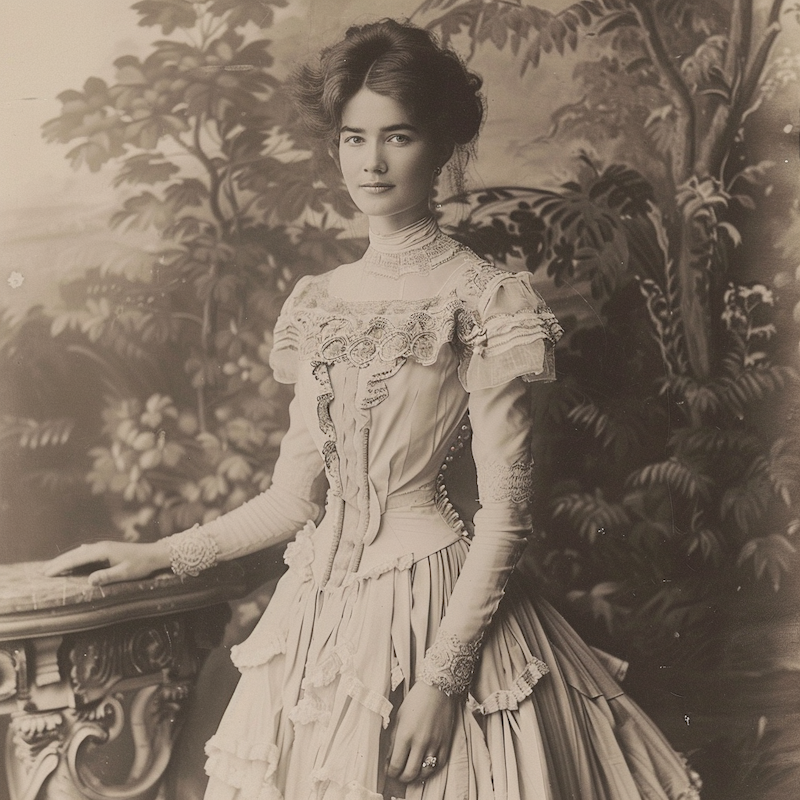
The 1920s brought a radical shift in women's fashion with the emergence of the flapper dress. This iconic style featured dropped waistlines, shorter hemlines, and loose-fitting silhouettes, reflecting the newfound freedom and liberation of women.

In the 1950s, fashion took a more feminine turn with the introduction of Christian Dior's "New Look." This style emphasized the hourglass figure with nipped-in waists and full skirts, marking a return to a more traditional and glamorous aesthetic.

Impact of Social and Cultural Changes on Women's Fashion
Women's fashion has always been influenced by social and cultural changes. From political movements to technological advancements, these factors have played a significant role in shaping fashion trends and styles.
The feminist movement of the 1960s and 1970s had a profound impact on women's fashion. Women began to reject restrictive clothing and embraced more gender-neutral styles, such as pantsuits and trousers. This shift in fashion represented a desire for equality and challenged traditional gender norms.

The rise of technology and globalization in recent decades has also influenced women's fashion. With the advent of the internet and social media, fashion has become more accessible and inclusive. Women now have a platform to express themselves and connect with others who share their fashion sensibilities.
Fashion Trends and Movements in the 20th Century
The 20th century witnessed various fashion trends and movements that continue to shape women's fashion today. From the glamorous styles of the 1920s to the rebellious looks of the punk era, each decade brought its own unique fashion statements.
The 1920s, known as the Roaring Twenties, saw the rise of the flapper dress and the boyish silhouette. Women embraced shorter hemlines, dropped waistlines, and a more relaxed and carefree style.
The 1960s and 1970s were marked by the counterculture movement and the rise of bohemian fashion. Maxi dresses, bell-bottoms, and psychedelic prints became symbols of individuality and nonconformity.
Modern Women's Fashion - Key Designers and Brands
In today's fashion landscape, there are several key designers and brands that have made a significant impact on women's fashion. These designers continue to push boundaries and redefine traditional notions of beauty and style.
-
Chanel: With its timeless elegance and iconic pieces, Chanel continues to captivate fashion enthusiasts worldwide. From the classic tweed suits to the coveted quilted handbags, Chanel represents sophistication and style.
-
Gucci: Under the creative direction of Alessandro Michele, Gucci has undergone a revolutionary transformation, blending vintage inspiration with eclectic flair. Bold prints, vibrant colors, and whimsical embellishments define Gucci's modern aesthetic.
-
Prada: Renowned for its innovative designs and forward-thinking approach, Prada remains a trailblazer in the fashion industry. From avant-garde runway looks to sleek accessories, Prada effortlessly combines luxury with contemporary edge.
-
Dior: With its rich heritage and unmistakable elegance, Dior continues to influence modern fashion with its feminine silhouettes and meticulous craftsmanship. From the iconic Lady Dior bag to the latest ready-to-wear collections, Dior epitomizes modern luxury.
-
Off-White: Helmed by Virgil Abloh, Off-White has become synonymous with streetwear sophistication, merging high fashion with urban culture. Bold graphics, industrial accents, and unexpected details define Off-White's edgy yet wearable aesthetic.
-
Stella McCartney: Known for her commitment to sustainability and ethical fashion, Stella McCartney offers modern women's clothing that is both luxurious and conscious. From tailored separates to statement accessories, McCartney's designs embody effortless chic.
-
Balenciaga: Under the creative direction of Demna Gvasalia, Balenciaga has redefined modern fashion with its avant-garde silhouettes and deconstructed designs. Bold shapes, exaggerated proportions, and unexpected details characterize Balenciaga's innovative approach.
In the landscape of women's fashion, these designers and brands continue to push boundaries, inspire creativity, and redefine modern style.
Sustainable Fashion and its Impact on Women's Fashion
In recent years, the fashion industry has faced criticism for its negative impact on the environment. As a result, there has been a growing movement towards sustainable fashion, which aims to minimize the industry's carbon footprint and promote ethical practices.

Sustainable fashion not only considers the environmental impact of clothing production but also focuses on fair labor practices and the well-being of garment workers. This shift towards sustainability has influenced women's fashion, with more designers and brands embracing eco-friendly materials and production methods.
The Future of Women's Fashion
As we look to the future, it is clear that women's fashion will continue to evolve and adapt to societal changes. The fashion industry is becoming more inclusive and diverse, with a greater focus on body positivity and representation.
Technology will also play a significant role in shaping the future of women's fashion. From virtual reality shopping experiences to 3D-printed clothing, advancements in technology will provide new avenues for creativity and self-expression.

Conclusion
The evolution of women's fashion is a testament to the progress made by women in society. From the restrictive corsets of the past to the body-positive movement of today, fashion has become a powerful tool for self-expression and a celebration of diverse identities.
As women continue to break barriers and redefine societal norms, fashion will continue to adapt and change with the times. Women's fashion is no longer limited by societal expectations, allowing women to embrace their unique sense of style and dress for themselves.
The future of women's fashion is exciting and full of possibilities. It will be shaped by women who are unafraid to challenge the status quo and embrace their individuality. As we move forward, women's fashion will continue to be a reflection of the ever-evolving spirit of women around the world.



